Building Stronger Communities with LED Digital Signs
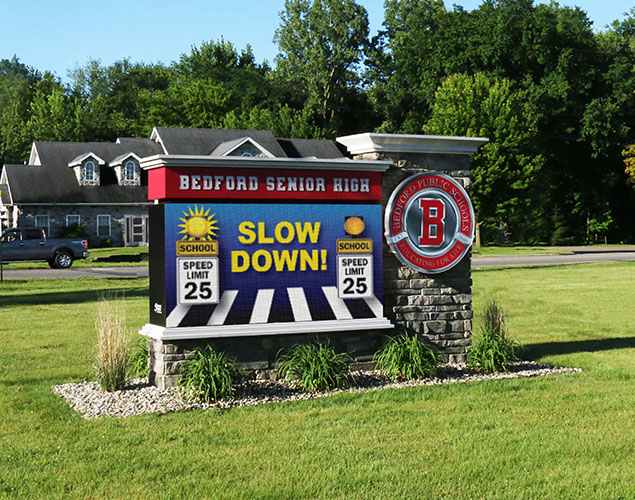
LED signs are more than just displays—they’re tools that help communities stay connected, informed, and engaged. Whether it’s a school district, city office, or local fire department, having a visible and flexible way to communicate can make all the difference. A Smarter Way to Share Information Static signs get ignored. Flyers get tossed. But an LED sign—bright, visual, and always current—gets noticed. It’s the fastest way to share info with the public, especially when messages need to change throughout the day. Local governments use LED signs to post event updates, weather warnings, holiday closures, election reminders, and more. It’s communication that actually reaches people—when and where it matters most. Real-Time Updates in High-Traffic Areas With cloud-based software, you can update an LED sign in seconds from anywhere. That means one sign—or many signs across a city—can share real-time updates instantly. From school alerts to road closures, your community stays informed without delay. And it’s not just about emergencies. Cities use LED signs to promote farmers markets, outdoor movie nights, and recycling programs. When people see what’s going on, they show up. It’s that simple. Designed for Public Use Next LED signs are built to be reliable, readable, and easy to use. Bright enough for sunlight. Tough enough for snow. Flexible enough for any message. And with long-life solid-state components, they last for years with very little maintenance. These signs are made for parks, libraries, schools, town halls—anywhere people need to stay connected. Local Events Get More Visibility Events succeed when people know about them. LED signs can advertise parades, fundraisers, farmers markets, and school functions. Their bright, moving visuals grab attention from drivers and pedestrians alike. Instead of relying on flyers or word of mouth, organizations can use digital signage to promote gatherings and increase turnout. This not only boosts participation but also strengthens community bonds. A Platform for Local Businesses Business owners can use these signs to highlight sales, promotions, or community involvement. A coffee shop might share a thank-you message after sponsoring a youth team. A hardware store might promote seasonal discounts. This type of messaging supports the local economy and shows that businesses are invested in the people they serve. As a result, the line between customer and neighbor begins to blur. Creating Two-Way Engagement Modern LED displays can do more than just broadcast messages—they can invite participation. Touchscreen kiosks or mobile-integrated signs allow residents to vote on local polls, give feedback, or explore maps of community services. These features turn passive viewers into active contributors, making people feel heard and included. Enhancing the Visual Identity of a Neighborhood Beyond function, LED signs can also add beauty and meaning to public spaces. Communities often display local artwork, historical facts, or seasonal graphics that reflect local culture. When placed in parks, plazas, or city centers, these signs become visual landmarks that add to a neighborhood’s charm and sense of identity. When used with intention, LED digital signs do far more than display messages—they build relationships. They inform, invite, involve, and inspire. From emergency notices to local art, these signs help knit people together into a stronger, more connected community. Frequently Asked Questions How do LED signs improve community communication?Digital signs are 400% more effective than static signs when it comes to grabbing attention. That visibility helps local governments reach more people with critical updates, event info, and public notices. Can LED signs be used for emergency alerts?Yes. LED signs are ideal for urgent updates. According to the Federal Highway Administration, real-time roadside signage improves public safety by increasing driver response time by up to 40%. Cities use them for weather warnings, PSAs, evacuations, and AMBER Alerts. Are digital signs a good investment for local governments?They are. LED signs last over 10 years and require little upkeep. Many municipalities see a return on investment within 2–3 years thanks to lower printing costs, improved attendance at events, and reduced call volume for basic info. Can messages be updated remotely?Absolutely. Most LED signs include cloud-based software that lets users schedule and send messages from a laptop or phone. Cities can update all of their signs at once—without sending anyone on-site. How do LED signs compare to traditional communication tools?Paper flyers and static signs are easy to miss. Digital signs are visual, motion-capable, and can change as often as needed. Studies show digital signage increases content recall by 83%—making it far more effective than paper-based outreach. At Next LED Signs, we love seeing how our digital displays help communities stay connected. Whether it’s sharing updates at city hall, promoting a neighborhood event, or giving local businesses a place to shine, our signs are built to bring people together. If your town or organization wants to make communication easier and more engaging, we’re here to help make it happen. Let’s bring your vision to life. Contact Next LED Signs today to explore cutting-edge digital signage solutions tailored to your industry.
Indoor Digital Displays Improve Wayfinding Efficiency
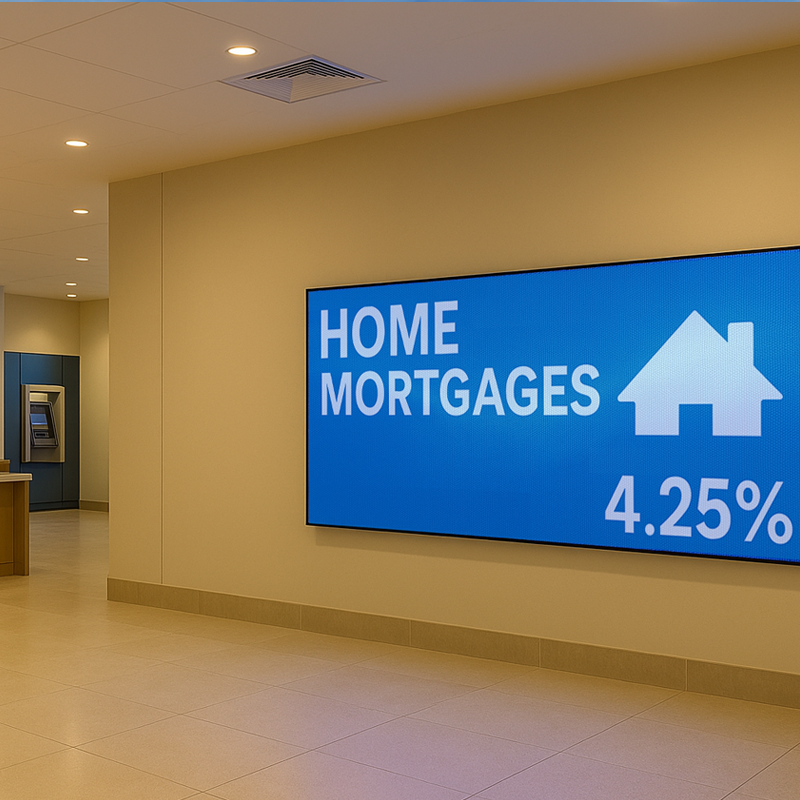
Finding your way through a busy building can be frustrating—especially in hospitals, schools, airports, and office complexes. That’s where indoor LED displays shine. These digital signs help people navigate large spaces quickly, confidently, and without confusion. Why Wayfinding Matters Good wayfinding improves the experience for visitors and staff. It cuts down on delays, missed appointments, and the need for one-on-one directions. In places like healthcare facilities, every second counts—and clear signage helps make sure people get where they’re going on time. Plus, wayfinding signs don’t just guide—they can inform. Event schedules, emergency messages, and service alerts can all be displayed in real time. LED Displays Make It Clear Traditional signs are static. Once printed, they stay the same—unless you replace them. Digital LED displays let you update directions, schedules, or alerts instantly. Whether you need to reroute traffic due to construction or show live updates during an event, your sign can adapt. And because LED displays are bright and clear from a distance, people spot them faster and follow instructions more easily. Industry Adoption and Market Growth Education Sector 70% of colleges have integrated digital displays for wayfinding, classroom information, and event scheduling. Retail & Public Spaces Digital signage engages 10% of U.S. residents over age 12, proving its effectiveness in attracting attention. Navigation Efficiency & Customer Satisfaction Implementing digital wayfinding solutions increases navigation efficiency by 40% and enhances visitor experience by 30% in complex venues like shopping centers and healthcare facilities. Market Expansion The global digital signage market continues to expand, with an estimated CAGR of 7.7%. Revenue is projected to grow from $25.1 billion in 2022 to $34.7 billion by 2026, fueled by increasing demand for digital wayfinding solutions. Flexible for Any Facility We design indoor signs that fit right into lobbies, hallways, entry points, and more. With slim profiles, high-resolution output, and quiet operation, these displays work seamlessly in: Hospitals Convention centers Universities Museums Office buildings Transit hubs Frequently Asked Questions How do LED displays improve wayfinding?Digital signs can increase wayfinding success by over 30% compared to static signs, according to a study by the Society for Environmental Graphic Design. Clearer instructions mean fewer people getting lost or missing appointments. Can the displays be updated in real time?Yes. With cloud-based software, staff can update directions or alerts in seconds. This is especially useful for facilities with shifting schedules, emergency notices, or high foot traffic. Are LED signs easier to read than printed signs?Absolutely. LED displays are brighter and more visible from a distance. In well-lit buildings or dim corridors, digital signs maintain their clarity—reducing confusion and eye strain. Can I show more than just directions?Definitely. Many facilities display room schedules, meeting notices, safety instructions, or service updates alongside wayfinding messages. It’s a flexible, multi-use solution. Do LED wayfinding signs reduce labor or costs?They do. Digital signage reduces the need for printed signs and personal assistance. One large hospital reported a 25% drop in staff time spent redirecting patients after installing LED wayfinding displays. At Next LED Signs, we provide state-of-the-art LED signage solutions designed to meet the needs of businesses worldwide. Whether you want to enhance retail experiences, streamline public communication, or improve operational efficiency, we can help. Let’s bring your vision to life. Contact Next LED Signs today to explore cutting-edge digital signage solutions tailored to your industry.
Indoor LED Displays Are Reshaping Workplace Communication
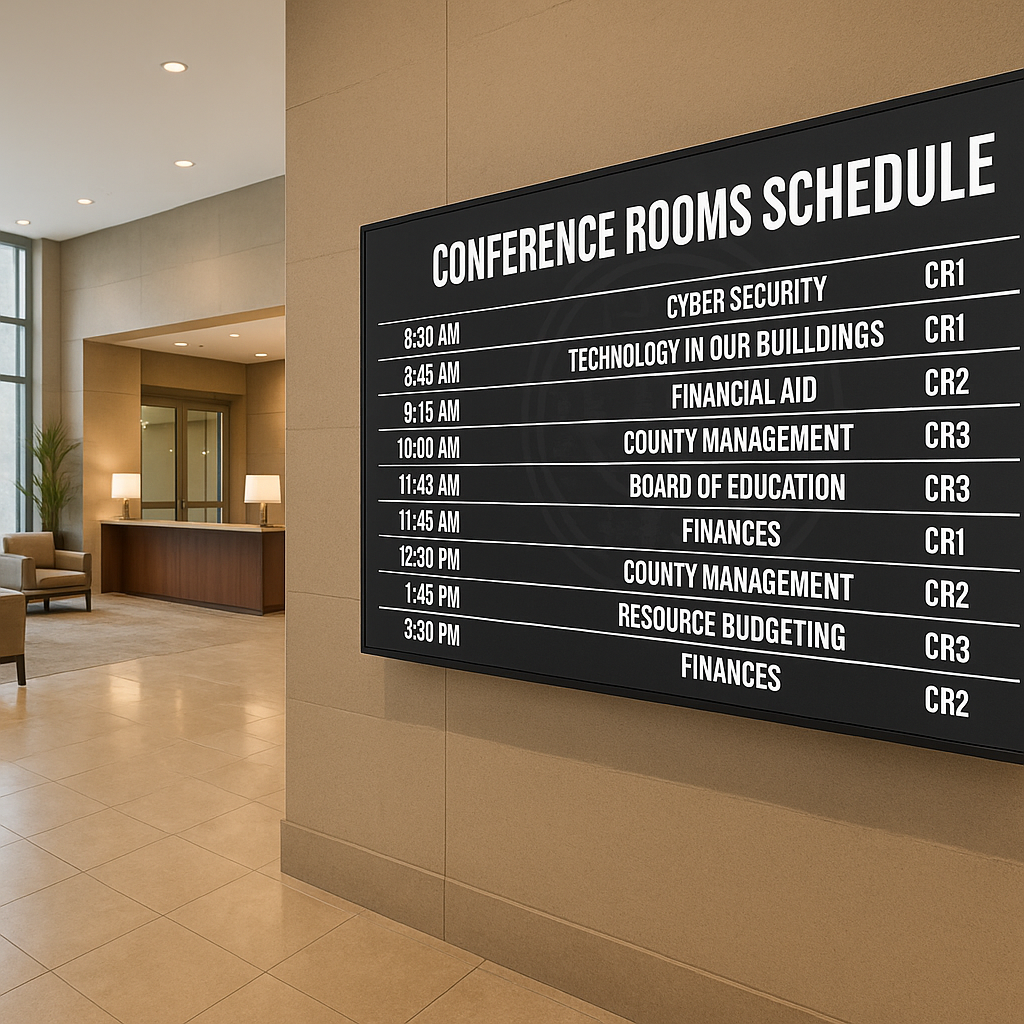
LEDs (Light Emitting Diodes) have skyrocketed in popularity thanks to their energy efficiency, eco-friendliness, affordability, and long lifespan. They’re the backbone of modern digital signage and scoreboards, offering businesses a reliable and impactful way to display information and attract attention.
Among the various types of LEDs, SMD (Surface Mounted Devices) and DIP (Dual Inline Package) LEDs stand out as the most common technologies. While they share the same foundational principles, they bring unique advantages to the table.
How to Choose the Right Indoor LED Display for Your Space

Indoor LED displays are a smart choice for businesses that want to communicate visually with impact. Whether you’re managing a lobby, retail floor, meeting space, or control room, the right LED sign makes it easier to deliver clear, eye-catching messages. But not all LED displays are created equal. To get the most out of your investment, you need to consider factors like viewing distance, pixel pitch, ambient lighting, and content needs. Let’s break it down. Why Indoor LED Displays Make Sense LED technology has quickly outpaced older options like LCD panels or projectors. Here’s why: They’re self-illuminating, so they remain bright and legible in any lighting. They’re modular, which means they scale to nearly any size or shape. They’re durable and energy-efficient, offering years of dependable service. LED signs are designed for attention. That’s why companies are using them in offices, retail stores, airports, hotels, conference centers, and even emergency command rooms. Fact: Indoor LED signs can operate for 100,000+ hours—that’s over 11 years of 24/7 use. Pixel Pitch: What It Is and Why It Matters Pixel pitch is the space between each LED diode, measured in millimeters. The lower the number, the tighter the pitch—and the sharper the image at close range. Here’s a quick reference: 0.9mm–1.5mm: Perfect for viewers within 6–10 feet (e.g., lobbies or meeting rooms) 1.5mm–2.5mm: Great for 10–20 foot distances (e.g., corridors or waiting areas) 2.5mm+: Ideal for distant viewing (e.g., indoor arenas or large halls) Tip: A tighter pitch boosts readability. In fact, when the pitch matches the viewing distance, message clarity improves by up to 70%. Ambient Light and Viewing Angles Lighting plays a big role in display performance. In well-lit spaces or areas with large windows, traditional displays often struggle with glare or washed-out images. That’s where LED shines—literally. LED screens stay bright and vibrant even in direct sunlight. They offer wider viewing angles (up to 180°), so content stays visible off-center. Stat: LED displays provide 10× better visibility in high ambient light compared to projection systems. What Will You Be Displaying? Choosing the right display isn’t just about size or brightness. You also need to think about what you’ll be showing. Detailed videos or high-res graphics? Go for a small pixel pitch with high refresh rates. Scrolling text or status updates? You can go with a higher pitch and simpler configuration. Also, if you plan to rotate different types of content throughout the day (e.g., live data, promotions, welcome messages), you’ll want a display that can handle fast transitions without flicker or lag. Benchmark: LED displays with refresh rates of 3,840 Hz or higher deliver smooth playback, even with fast-moving visuals. Efficiency and Longevity LED signs aren’t just more attractive—they’re also more cost-effective over time. They require less maintenance than LCDs or projectors. They consume 30–50% less energy thanks to modern power-saving features like auto-dimming. And they last longer, with less image degradation over time. Calculating Total Cost of Ownership It’s true—LED displays can cost more upfront. But over the life of the sign, that cost evens out. When you factor in: Reduced power usage Lower maintenance needs Longer operational life …you end up saving money in the long run. Many businesses see full ROI in 2–4 years, especially in high-visibility locations. Frequently Asked Questions About Indoor LED Displays Q: What pixel pitch is best for indoor LED displays at close viewing distances?A: For viewers within 6 to 10 feet, a pitch between 0.9mm and 1.5mm is recommended. According to recent display studies, matching pitch to proximity improves text and graphic clarity by up to 70%. Q: How do LED signs perform in bright indoor environments?A: LED displays are 10× more visible than projection screens in high ambient light. They remain vibrant even in sunlit or glass-heavy spaces, with 180° viewing angles for maximum reach. Q: What’s the difference between pixel pitch and resolution in LED displays?A: Pixel pitch is the spacing between diodes and affects how sharp the image appears at a given distance. Resolution refers to the total number of pixels. Smaller pixel pitch often means higher resolution per square foot. Q: Are indoor LED signs energy efficient?A: Yes. Indoor LED signs use 30–50% less energy than traditional LCDs or projectors. Most commercial-grade units feature built-in auto-brightness controls to minimize energy waste. Q: How long does a commercial indoor LED display last?A: Most indoor LED signs are rated for 100,000 hours of operation. That’s equivalent to over 11 years of continuous use—making them a reliable long-term asset. Why NEXT LED Signs Is the Right Choice for Indoor LED Displays At NEXT LED Signs, our indoor LED displays deliver unmatched clarity, reliability, and performance. Whether you need a high-resolution video wall for your corporate lobby or a dynamic message board for a retail space, our team will help you choose the right pixel pitch, size, and configuration to match your environment. Every display we build is engineered for long-term operation, with low energy use and seamless integration. From planning to installation and ongoing support, we’re here to make sure your indoor LED display works exactly how—and where—you need it to.
Digital Signs Revolutionize Healthcare Communication & Outreach
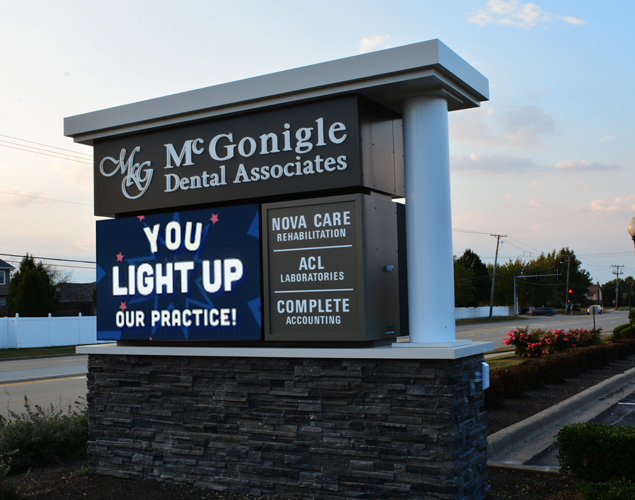
In today’s fast-paced healthcare environment, effective communication is paramount. Next LED Signs empowers healthcare institutions with spectacular LED displays that inform, direct, and enrich the experiences of patients, staff, and visitors.
Transform Civic Engagement with Digital LED Displays

Civic organizations play a vital role in fostering community connections, and digital LED displays offer powerful tools to amplify their impact.
LED Signage for Non-Profit Organizations: Strategies and Benefits
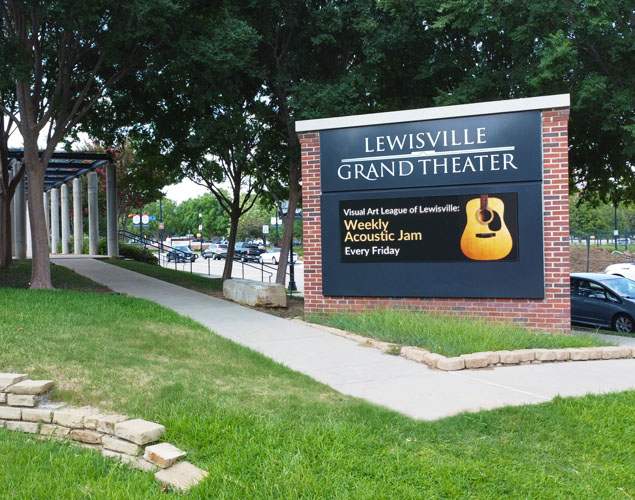
effective communication is essential for outreach, engagement, and achieving meaningful impact. LED signage provides a powerful, versatile tool to strengthen these efforts, helping non-profits connect with their communities, increase visibility, and drive participation.
